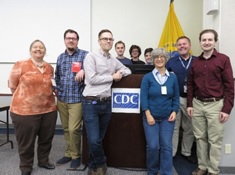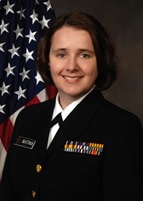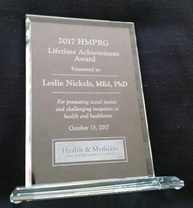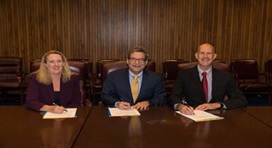eNews: Volume 15, Number 7 (November 2017)
Volume 15, Number 7 (November 2017)
From the Director’s Desk
John Howard, M.D.
Director, NIOSH
How Do You Talk About Workplace Motor Vehicle Safety?
The NIOSH Center for Motor Vehicle Safety (CMVS) is taking up the challenge of communicating to employers and workers about the risks of driving for work and how to avoid motor vehicle crashes. Crash risk affects workers in all industries and occupations, whether they drive tractor-trailers, cars, pickup trucks, or emergency vehicles, and whether driving is a primary or occasional part of the job. Because of the diversity of these work settings, one size does not fit all when it comes to either research or communication. Striking a balance, the CMVS prioritizes workers who are at highest risk for crashes and injuries—truck drivers, emergency responders, and oil and gas workers—while at the same time accommodating the wide range of other employers and workers who need motor vehicle safety information.
Research from the CMVS feeds directly into recommendations for policy and practice. Taking the time to understand the work environment—for example, organizational dynamics, work patterns, and employment arrangements—helps us to ask the right questions and increases the chances that our findings will reduce crashes and injuries. Throughout a research project, we engage with participating companies, employers and their organizations, workers and their representatives, and others who have an interest in the work. We come to understand the attitudes that shape safety practices, the barriers and incentives to making change through motor vehicle safety interventions, and the specialized language that will make our communications credible. Our interaction with the law enforcement community is a good example of this at work. The CMVS is developing a motor vehicle safety messaging toolkit for law enforcement officers, the tone and language of which reflects what motivates police to adopt safe driving habits. Qualitative data from interactions with law enforcement officers by a NIOSH researcher and health communicator, in addition to a review of the toolkit by a police department, informed the “others first” perspective woven throughout toolkit messaging.
The CMVS recently sponsored several focus groups that explored the varying communication needs of companies whose workers drive on the job. With a focus on small businesses, participants came from four industry segments: trucking, oil and gas, emergency response, and employers from other industries whose workers drove light vehicles. The results showed the importance of developing products tailored to the needs of each audience. In work settings such as emergency response or oil and gas, employers wanted materials that acknowledge the specialized nature of workplace driving in their industry and speak to them using familiar terms. On the other hand, the focus-group participants whose workers operated light vehicles asked for more materials to help them understand how to start and sustain a motor vehicle safety program. By communicating to both specialized and general audiences, the CMVS will continue to meet the needs of all who drive for work and their employers.
The CMVS team is learning that it’s not just what is presented that matters—it’s also how the message is delivered. The focus-group results are helping the team to better structure its communication approaches to meet the needs of a more mobile workforce that has less time to digest safety materials. Across all the industry groups that participated, employers suggested that CMVS materials for workers be interactive, concise, and limited to one topic at a time; use more graphics; reinforce information presented earlier; and lend themselves to peer-to-peer learning. Employers expressed that they, as managers, would also be drawn to more visually engaging materials that delivered the necessary information using as few words as possible.
Moving forward, the CMVS is committed to research that will lead to science-based recommendations on how to prevent motor vehicle crashes at work and to communication products that will present safety information that is engaging, concise, and easy to understand. Stay updated on CMVS progress and communication products by subscribing to Behind the Wheel at Work eNewsletter, following @NIOSH_MVSafety on Twitter, and visiting Motor Vehicle Safety at Work for existing resources.
The NIOSH Science Blog is 10 Years Old This Week!
Ten years ago this week NIOSH posted its first NIOSH Science Blog, Preventing Fire Fighter Fatalities from Cardiovascular Events. Since then the blog has been viewed over 2.5 million times and has received over 7,000 comments! NIOSH has posted 433 blogs on a range of topics from A Robot May Not Injure a Worker: Working safely with robots to Preliminary Field Studies on Worker Exposures to Volatile Chemicals during Oil and Gas Extraction Flowback and Production Testing Operations. The blog has provided us with a great new way to communicate with our various audiences and allowed readers to write back to us with comments and questions. As we enter into our next decade of blogging, let us know if there are topics you would like to see included on the blog or if you have a favorite from the past 10 years.
- Director’s DeskThe NIOSH Science Blog is 10 Years Old This Week!
- New Guidance Available for Hurricane Recovery Efforts
- New Fentanyl Resources Now Available for First Responders
- NIOSH Announces New Robotics Research Center
- New Article on Unmanned Aerial Vehicles in Construction and Worker Safety Available
- Get Updates from NIOSH Emergency Preparedness and Response Office
- New Hazard Recognition Challenge App for Surface Stone Mining
- First-ever International Small Business OSH Conference in the U.S.
- New NIOSH Extramural Research and Training Website
- NIOSH Mining and Construction Programs Collaboration Update
- Ready, Set, Edit!
New Guidance Available for Hurricane Recovery Efforts
NIOSH has developed key messages regarding dangers emergency response and recovery workers and volunteers face in the aftermath of a hurricane. This guidance, available in English, Spanish, Chinese, and Vietnamese, includes information about how to work safely and avoid hazards such as carbon monoxide, mold, and heat stress. Feel free to copy and paste the information, links, and images into your newsletters, emails, and social media posts.
New Fentanyl Resources Now Available for First Responders
A new fentanyl resource is now available for first responders. These posters provide first responders with unified, scientific, evidence-based recommendations to protect themselves when the presence of fentanyl is suspected during the course of their daily activities such as responding to overdose calls, conducting traffic stops, arrests, and searches. The Recommendations are the result of a Federal Interagency Working Group coordinated by the White House National Security Council that NIOSH is a part of. A more comprehensive report on the opioid crisis was also released by the Working Group.
NIOSH Announces New Robotics Research Center
NIOSH has established a new Center for Occupational Robotics Research to provide scientific leadership to guide the development and use of occupational robots that enhance worker safety, health, and well-being. Given the NIOSH mission to develop new knowledge, the Institute is uniquely positioned to evaluate potential benefits and risks of robots in the workplace, conduct workplace interventions to prevent robot-related worker injuries, and develop guidance for safe interactions between humans and robots.
New Article on Unmanned Aerial Vehicles in Construction and Worker Safety Available
A new journal article co-authored by NIOSH Director Dr. John Howard and Drs. Vladimir Murashov and Christine Branche, on “Unmanned aerial vehicles in construction and worker safety” was published in October in the American Journal of Industrial Medicine.
Get Updates from NIOSH Emergency Preparedness and Response Office
Did you know you can get updates on new NIOSH emergency preparedness and response information and resources delivered to your inbox? Sign up here.
New Hazard Recognition Challenge App for Surface Stone Mining
Are you up for the challenge? Practice your hazard finding skills with our new web application, Haz Rec Challenge, which lets you perform a virtual workplace examination on four locations at a surface stone operation: the pit, the plant, the shop, and a roadway. How many hazards can you find?

Dr. Tom Cunningham, coordinator of the NIOSH Small Business Assistance Program, and Dr. Lee Newman, director of the Center for Health, Work & Environment, present the Most Outstanding Poster award to Ms. Brenna Keller (not pictured) of NIOSH at the conference.
First-ever International Small Business OSH Conference in the U.S.
NIOSH and the Center for Health, Work & Environment at the Colorado School of Public Health recently hosted the fourth international Understanding Small Enterprise (USE) Conference in Denver, Colorado. Overall, 68.9% of occupational injuries and illness in the U.S. occur in establishments with fewer than 250 employees. While this is proportional with the number of workers, it represents a major target for OSH intervention and a reason to invest in small business OSH research and development. The USE Conference brought together researchers, small employers, and small business stakeholders from 18 countries and around the U.S. to learn about the latest issues in small business OSH and to find new ways to move our research into practice in small workplaces. The next USE conference is slated for 2019 in Brazil.
New NIOSH Extramural Research and Training Website
A new web page is now available for information on NIOSH extramural research and training program. The page includes information on funding opportunities, research and training grants, performance data and reports, news and notices, and a new dashboard that shows extramural activity.
NIOSH Mining and Construction Programs Collaboration Update
The NIOSH Mining and Construction Programs, along with the NIOSH National Construction Center (CPWR—the Center for Construction Research and Training) held a webinar in October titled “Protecting Workers in Enclosed Cabs from Silica Exposure: Leveraging Research from the Mining Industry.” A recording of the webinar is available and a PDF of the slides is available for download. The enclosed cab design was included in the OSHA Respirable Crystalline Silica Standard, Table 1 Specified Exposure Control Methods when Working with Materials Containing Crystalline Silica under the column “Engineering and work practice control methods.”

NIOSH researchers with Wikipedians during an edit-a-thon in recognition of National Nanotechnology Day.
Ready, Set, Edit!
On October 19, NIOSH hosted an edit-a-thon in honor of National Nanotechnology Day. Wikipedians from across the Midwest gathered to work with NIOSH scientists to expand and improve Wikipedia articles about the emerging workplace safety and health issues of nanotechnology, advanced materials, and additive manufacturing. By days end, Wikipedians expanded the articles of dustiness, the health and safety section of 3D printing, and a draft on engineering controls for nanomaterials. The NIOSH Nanotechnology Research Center coordinated the event and collaborated with the Manufacturing and Engineering Control Program to provide a broad perspective. NIOSH thanks the Wikipedians for attending.
Monthly Features
NIOSH Congratulates

Dr. Lauralynn McKernan—Occupational Health and Safety Industrial Hygiene Impact Award
On October 5, Dr. Lauralynn McKernan of NIOSH received the Occupational Health and Safety Industrial Hygiene Impact Award by the University of Cincinnati. Dr. McKernan received this award to recognize her significant impact in industrial hygiene to improve the health, safety, and wellbeing to workers throughout her career. This special award and others were meant to celebrate significant achievements by individuals as well as the 40th Anniversary of the University of Cincinnati Education and Research Center.

Dr. Leslie Nickels—Lifetime Achievement Award for Worker Health, Safety and Justice
On October 13, Dr. Leslie Nickels of NIOSH received the Lifetime Achievement Award for Worker Health, Safety, and Justice from the Health & Medicine Policy Research Group. This award is only one of three presented in the group’s 36-year history. Dr. Nickels is described as both a warrior in the struggle for worker safety, health, and justice and an educator/researcher who understands the importance of collaboration with the community. In honor of Dr. Nickels, Health & Medicine also plans to designate a fellowship that focuses on issues relating to worker health, safety, and justice as part of the Chicago Area Schweitzer Fellows Program, which mentors young professionals as they design and implement community projects to improve the health of vulnerable populations.
NORA Update
Draft NORA Construction Agenda Open for Public Comment
The draft National Occupational Research Agenda for Construction is open for public comment until November 27. If you have any questions contact NORACoordinator@cdc.gov.

(left to right) OSHA Deputy Assistant Secretary Ms. Loren Sweatt, RIA President Mr. Jeffrey Burnstein, and NIOSH Director Dr. John Howard at the Alliance signing.
r2p Corner
NIOSH, OSHA and the Robotic Industries Association Establish Alliance
In October, NIOSH, the Occupational Safety and Health Administration (OSHA), and the Robotic Industries Association (RIA) established a new Alliance to address workplace safety and health issues related to traditional industrial robots and emerging collaborative robots. For more information contact Dawn Castillo.
News From Our Partners
New Hazard Alert for Construction Workers Using SPF
A new Hazard Alert by the Occupational and Environmental Medicine team at Michigan State University is now available. The Alert provides recommendations and resources to help protect workers in the construction industry during spray polyurethane foam (SPF) applications.
Wisconsin Division of Public Health Work-related Asthma Report
In Wisconsin, more than half of the state’s workers with asthma attribute their disease to work, but asthma burden has not been adequately described by specific industry or occupation. In a new report, the Wisconsin Asthma Program and Occupational Health Program identified occupations in the state whose workers may be at high risk for asthma by analyzing data from the Behavioral Risk Factor Surveillance System (BRFSS) industry and occupation module and the BRFSS Asthma Call Back Survey. Combining these data sources identified additional occupations at risk for work-related asthma.
OSHA New Compliance Assistance Resources
The latest Occupational Safety and Health Administration (OSHA) Quarterly Update on the New Compliance Assistance Resources is now available. This report covers new products issued from July 1 to September 30 and includes the following:
- OSHA compliance assistance products
- Materials developed by grantees under the Harwood Grant Program
- Products developed by OSHA’s Alliance Program participants
- NIOSH resources, including Fatality Assessment and Control Evaluation (FACE) Program reports
FACE Reports
Mechanic Electrocuted When a Mobile Light Tower Contacted Powerline—New York
A maintenance mechanic of a paving company was electrocuted at a road construction site when a mobile light tower contacted a powerline. The mechanic extended the telescopic mast and raised the tower instead of retracting and lowering. The tower contacted the powerline, and the electric current ignited the diesel in the tower’s fuel tank causing an explosion and setting the light tower on fire. The mechanic was pronounced dead at the scene.
Two Construction Workers Fatality Crushed When Cement Formwork Collapsed—New York
A construction laborer and a concrete pump operator suffered fatal crushing injuries when formwork collapsed during concrete placement at a construction site. The laborer and pump operator were working from a platform abutting a retaining wall. When the freshly poured concrete was 10 feet high, the wall and work platform collapsed. The laborer was pronounced dead on the scene. The pump operator died nine days later from crushing injuries.
Health Hazard Evaluation (HHE) Program Update
Evaluation of Heat Sealing Operations at a Plastic Film Assembly Facility
Health Hazard Evaluation Program investigators found possible work-related asthma and low levels of various aldehydes in air samples. Employee symptoms improved after a change in source materials, but some continued to experience headaches and asthma-like symptoms. Finding carbon monoxide in areas with and without forklift use, investigators recommended properly maintaining forklifts and conducting full-shift carbon monoxide exposure monitoring. For more information click here.
Evaluation of Exposures in an Aircraft Refinishing Plant
Finding overexposures to hexavalent chromium and cadmium in the air and nasal tissue damage consistent with chromium exposure, Health Hazard Evaluation Program investigators recommended medically monitoring employees, improving ventilation in stripping and painting bays, and requiring the use of airline respirators for employees who apply primer or paint or who do sanding. For more information click here.
New NIOSH Communication Products
- NIOSH Stories of Impact:
- Immediate Dangerous to Life or Death (IDLH) Value Profiles:
What’s New on the NIOSH Science Blog? Join the Discussion Today!
- New Software Tracks Health of Emergency Responders
- Job Complexity, Race, and Socioeconomic Status: Examining Health Disparities from an Occupational Perspective
- Can Drones Make Construction Safer?
- Halloween Quiz
Federal Register Notices of Public Meetings and Public Comment
Mobile Proximity Initial User Feedback—New
The notice was posted on September 6. Comments must be received on or before November 6.
Pulmonary Function Testing Course Approval Program Reinstatement with Change
The notice was posted on October 13. Comments must be received within 30 days.
Draft-National Occupational Research Agenda for Construction
The notice was posted on September 27. Comments must be received by November 27.
Online Training for Law Enforcement to Reduce Risks Associated with Shift Work and Long Work Hours—New
The notice was posted on October 13. Comments must be received by December 12.
Application of Biological Monitoring Methods for Chemical Exposures in Occupational Health
The notice was posted on October 16. Comments must be received by December 15.
Respiratory Protective Devices—Revision
The notice was posted on October 20. Comments must be received by December 19.
A Performance Test Protocol for Closed System Transfer Devices Used During Pharmacy Compounding and Administration of Hazardous Drugs; Extension of Comment Period
The notice was posted on July 26. Comments must be received by February 28, 2018.
World Trade Center Health Program; Request for Nominations of Scientific Peer Reviewers of Proposed Additions to the List of WTC-related Health Conditions
The notice was posted on March 22. Nominations must be received by February 1, 2019.
Call for Abstracts
Kentucky Conference on Health Communication
Deadline for submission of papers, posters, and panels is December 1.
19th Conference of the International Society for Respiratory Protection
Deadline for submission of papers and posters is March 15, 2018.
Upcoming Conferences and Workshops
10th International Joint Conference on Occupational Health for Healthcare Workers: Health & Wellbeing in the Health Care Sector; Addressing Current Threats to Workers
November 28–30, Khon Kaen, Thailand
Kentucky Conference on Health Communication
April 12–14, 2018, Lexington, KY
2nd International Symposium to Advance Total Worker Health®
May 8–11, 2018, Bethesda, MD
Fifth International Fishing Industry Safety and Health Conference (IFISH 5)
June 10–13, 2018, St. Johns Newfoundland and Labrador, Canada
19th Conference of the International Society for Respiratory Protection
September 15–20, 2018, Denver, CO
National Occupational Injury Research Symposium 2018
October 16–18, 2018, Morgantown, WV
A comprehensive list of upcoming conferences can be found at www.cdc.gov/niosh/exhibits.html.
This Month in History
A series of coal mine explosions in the United States from 1907 through 1909 killed approximately 774 miners in total. Ultimately, these mine disasters culminated in the 1910 Organic Act (Public Law 61-179), establishing the U.S. Bureau of Mines to improve safety and protect miners. By 1997, Congress had closed the bureau and transferred its functions to NIOSH. More information is available on the NIOSH History of the Mining Program web page.
